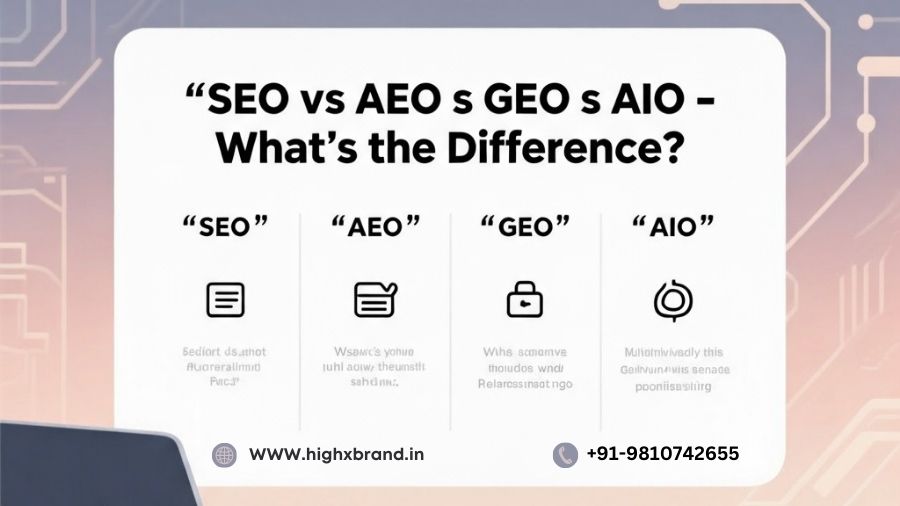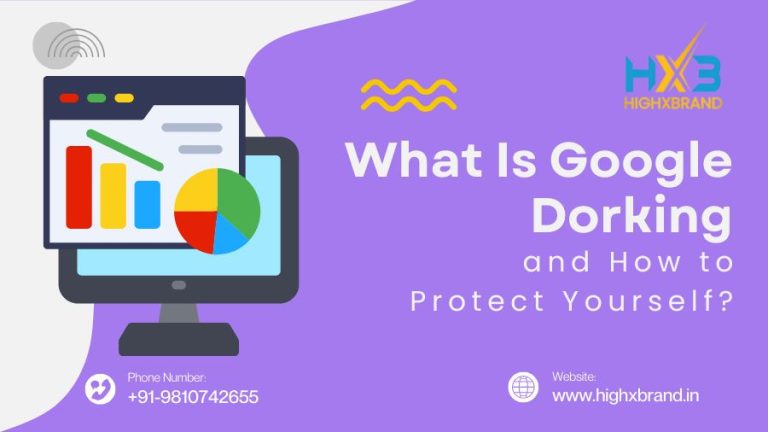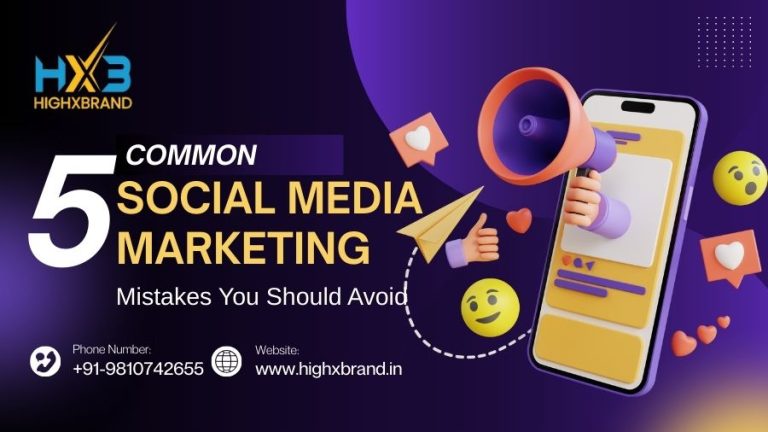In today’s digital-first world, businesses are continually working to get visibility, relevance, and engagement online. While SEO (Search Engine Optimization) is still the long-standing provider of digital marketing, many newly minted ilk such as AEO (Answer Engine Optimization), GEO (Generative Engine Optimization), and AIO (AI Optimization) now exist and are moving quickly up the charts.
But what is all of this? What is the difference? Most important, how can your business leverage it to stay competitive?
In this blog, we outline SEO, AEO, GEO, and AIO so you can discern and contextualize them within the
spam-search-generative-content-now-visual-sound-supported-with-fake-bots contexts.
1. SEO – Search Engine Optimization
What is Search Engine Optimization?
SEO or Search Engine Optimization is the process of optimizing web content in order to be ranked higher in search engine results pages (SERPs) including Google, Bing and Yahoo!
The focus of SEO is organic traffic – to make sure that relevant search terms are easily findable and ranked high enough on your website with highxbrand.in
The main components of SEO:
On-page SEO: Page content, keywords, meta tags, and internal links.
Technical SEO: Page speed, mobile usability, structured data, and crawlability of the content.
Off-page SEO: Backlinks, domain authority, and brand mentions.
Local SEO “Near me” searches and Google Business Profiles.
The importance of SEO:
Even with the rise of AI response engines, SEO is still important. SEO will help you get indexed, get discovered, and get trusted by search engines and users.
2. AEO – Answer Engine Optimization
What is AEO?
AEO, or Answer Engine Optimization is the optimization of content such that answer engines (e.g. Google feature snippets, Bing’s AI, or voice assistants such as Alexa and Siri) select it to answer your request directly.
This is increasingly useful, since more and more users are searching for the quickest answers (and specifically for voice and/or mobile users), answer engines can produce their results without necessarily relying on users to click.
AEO in action:
Have you ever asked Google, “What is the capital of France? and get the answer at the top of your screen? This is a perfect use case of AEO working on your behalf.
To clarify things, here are the main AEO techniques:
- Structured data/schema mark-up
- Structured content to make the content easier to read in FAQ format, lists, or tables.
- Authoritative succinct answers for commonly asked questions that receive high search volumes.
- Getting AEO effective for voice search and conversational queries.
Why is AEO important?
While we live in an era of zero click search and voice assistants, AEO allows your brand to be visible to users although they may not even visit your website! AEO builds brand authority, directs titled traffic and trust.
3. GEO – Generative Engine Optimize
What is GEO?
Generative Engine Optimization (GEO) is a new model of digital content optimization designed for artificial intelligence (AI)-driven generative engines like ChatGPT, Google SGE (Search Generative Experience), Perplexity, and others.
Generative engines differ from traditional search engines in that they do not pull data from a collection of sources to provide a single answer; rather, generative engines generate answers in real-time based on an individualized user prompt with the likelihood of including data from multiple sources.
What’s Concisely Geo:
GEO’s objective is to ensure your content is not just discoverable, but that it is used as a reference in an AI-generated response—importantly, this means making your website a trusted data source for all AI systems.
Tactics for GEO:
- Publish original, factual, and high quality content—reliable content, plain & simple.
- Be sure your data has clear authorship, credibility, and citations.
- Incorporate semantic SEO consisting of entity-based content strategies.
- Maintain a solid domain authority and collaborate consistently through other platforms.
Why GEO is the Future:
As AI-driven search rockets towards mainstream, GEO is a means of ensuring you content is included in an AI-generated summary located within user’s search result snippet—instead of communicating through non-traditional settings—that are not traditionally used on search site.
4. AIO – AI Optimization
What is AIO?
AIO, or AI Optimization, is about optimizing your online visibility, processes, and content for both AI-powered content tools and users, powered by AI.
This does not simply mean optimizing content, but implementing AI tools to create and personalize content and leverage analytics, customer support, & more.
AIO in Practice:
- Using AI tools (like ChatGPT, Jasper, or Copy.ai) you can create a layer of AI to fast-track your content creation.
- Generative Engine Optimization (GEO) is a new emerging all-new optimization type focused on optimizing content for generative AI engines like ChatGPT, Google’s SGE (Search Generative Experience), or Perplexity.
- Generative Engines do not work like traditional search engines. Generative Engines generate the answer entirely on the fly without tangible links, and accumulate their answers anywhere they see fit based on user prompts.
AIO = People + AI:
it is not just a strategy, it is a shift in mindset – adopting AI not only as a tool, but as a partner and co-creator in your digital marketing.
Why AIO provides a competitive edge:
With AI being at the heart of how consumers discover and consume content, businesses that can implement AIO strategies will experience efficiency, personalization and reach that completely outpaces the traditional marketing approach.
Which One Do You Focus On?
The short answer: All of them—strategically.
So think about it this way:
- Start with SEO – there absolutely needs to be the foundation of core content, and technically, you need to start with a very strong technical site.
- Next layer in AEO – our SWAT content shows up for zero-click and voice search.
- Now think about the future with GEO – we have usable and citable content by AI tools.
- Finally we embrace AIO and become efficient, personalized, and AI-ready with your digital strategy.
All four approaches represent different user behavior and search evolution, but collectively; they ensure you are not just present, but you are relevant, and competitive as the digital landscape changes rapidly.
Final Thoughts
As search engines continue to evolve into answer engines and generative models, the differences between traditional SEO v. AI optimization & AEO become blurred. Organizations that are aware and proactive in these changes will have a significant competitive advantage—not just on visibility but on credibility, engagement, and consumer trust.
- SEO got us users to the site.
- AEO gets us referred to as an authority and treated that way.
- GEO gets us cited in an AI world.
- AIO gets us to scale.
The future of search is not about gaming algorithms—it’s about unpacking user intent and matching it to where technology meets those needs.




